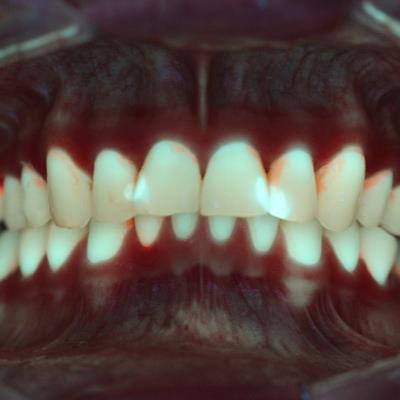Dental caries is the most prevalent disease worldwide. With this in mind, we develop new approaches for caries diagnostics and monitoring, and we test existing approaches for validity and reliability. We analyze and quantify the oral microbiome to detect the amount of the cariogenic biofilm and to develop new therapeutic approaches. Furthermore, multidisciplinary dental care is an important research area to access oral health-related quality of life. Therefore, we pursue the approach of cross-sectional case studies in patients with chronical diseases (e. g. diabetes, severe heart failure, rheumatoid arthritis) to examine oral health, behavior and life quality. Moreover, we aim to develop concepts for endo- and periodontal treatments.

Intraoral view of stained dental biofilm, with old (violet) and new (red) plaque areas

Red fluorescence indicates areas with bacterial metabolites (porphyrines) in the biofilm (QLF-D Biluminator)

Blue areas indicate quantitative assessment of the fluorescence signal (QLF-D Biluminator)
